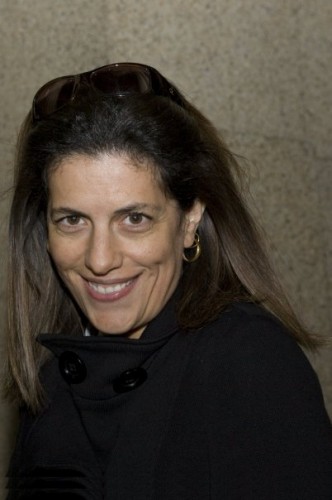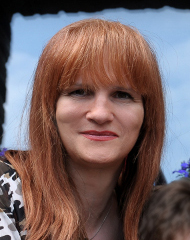As OpenSim continues to enjoy a sky-high growth rate and alternatives lose ground, a new gold rush may be in the works — to patent as many key technologies as possible, before other companies do.
That doesn’t make OpenSim core developers very happy.
“Infrastructures must by owned by everyone and no one in particular,” said Christa Lopes, OpenSim core developer and a professor of informatics at the University of California, Irvine, in a post this week. Lopes is the inventor of the hypergrid system that allows avatars to teleport between different virtual worlds. The hypergrid system is currently used by hundreds of OpenSim-based grids.
“Don’t start creating obstacles by filing patents that are infrastructural in nature,” she warned other developers and investors. ” Those patents will be a nuisance, and ultimately useless for your business.”

Lopes said that if such patents are filed, she will use every resource she has available to fight them, either to challenge the legality of such patents, or to invent new technology to make the patent irrelevant.
That doesn’t mean that she’s opposed to the commercial development of the platform, she said.
“An ecosystem of businesses is exactly what we want to happen, if OpenSim is to fulfill its potential,” she said.
Patents are useful for software developers in that they help them protect a technology while they commercialize it — and also enable them to license this technology to others, as a secondary revenue source. These patents are known as “business method patents” since normally software cannot be patented, only copyrighted. A copyright protects a specific expression of a work, but not the underlying technology — allowing competitors to copy features and interfaces as long as they create them from scratch.
Business method patents became popular during the dot-com boom, with Amazon patenting its “1-Click” shopping cart. According to Linux distributor Red Hat Inc., there are currently more than 200,000 of these patents in the U.S.
The Supreme Court is currently reconsidering software patents, however, in the case Bilski v. Kappos, and many open source developers are urging the court to eliminate or limit these patents.
“Patents give the right to exclude others from using an invention, but open source developers are not seeking exclusion,” said Red Hat’s legal team in a statement. ” They want to share code and collaborate, and patents interfere with this process.”
In addition, it is very easy to violate someone’s patent — no actual code is necessary. As a result, software patents make it difficult for software developers to create new products, since there is always the overhanging threat of expensive patent lawsuits.
“If people had understood how patents would be granted when most of today’s ideas were invented, and had taken out patents, the industry would be at a complete standstill today,” Microsoft founder Bill Gates wrote in a 1991 “Challenges and Strategy” memo.
There’s some academic support for this position (though Microsoft itself has filed thousands of software patents since Gates wrote his memo). According to a study published last year in Columbia Science and Technology Law Review, a patent system such as one that we have now “generates significantly lower rates of innovation” than one where such parents are not allowed. According to the authors, current patent systems actually deter innovation instead of spurring it, contradicting the common belief that investors wouldn’t invent unless they were able to protect their work with patents.
“Some large companies are particularly aggressive when it comes to filing patents on absolutely everything for which a patent hasn’t been filed yet, no matter where the idea came from, and no matter the merits of the claims,” said Lopes.
She had one warning for these companies: “Patent OpenSim-related infrastructure at your own peril.”

Lopes isn’t the only OpenSim core developer worried about the risks of patents.
“I’m not a believer in business method and software patents in general, I believe they are designed to stifle innovation and prevent competition by startups through increasing risk and costs for them,” said Melanie Thielker, an OpenSim core developer based in Germany. Thielker is also the CEO of OpenSim hosting company 3D Hosting. “Such patents serve no beneficial purpose for anyone but their holders, allowing them to use America’s litigious culture to keep down innovative, but threatening ideas.”
Patents are particularly dangerous in the early stages of a platform’s development, she added.
“OpenSim is an emerging technology and, as such, its direction is not yet set,” she told Hypergrid Business. “Patents like these can only serve to close off entire development avenues.”
However, OpenSim isn’t just backed by academics like Lopes and independent developers like Thielker.
Software giants including IBM, Intel and Microsoft have also lined up behind the technology.
IBM, for example, offers the Lotus Sametime 3D product, which is based on OpenSim. Intel is the backer of the ScienceSim grid, an OpenSim platform for scientists and researchers. And Microsoft has its own OpenSim grid, currently run in private mode by ReactionGrid.
So far, all three have played nice with the OpenSim community. IBM and Intel, in particular, have employees active in OpenSim development and have contributed patches and resources to the project.
In addition, IBM has a good history with the Linux open source community.
As of yet, IBM has not answered our requests for a response to Lopes’ posting.
Mic Bowman, the principal investigator from Intel who is leading Intel’s research in support of ScienceSim, declined to comment.
- OSgrid back online after extended maintenance - April 16, 2025
- Analysts predict drop in headset sales this year - March 25, 2025
- OSgrid enters immediate long-term maintenance - March 5, 2025
